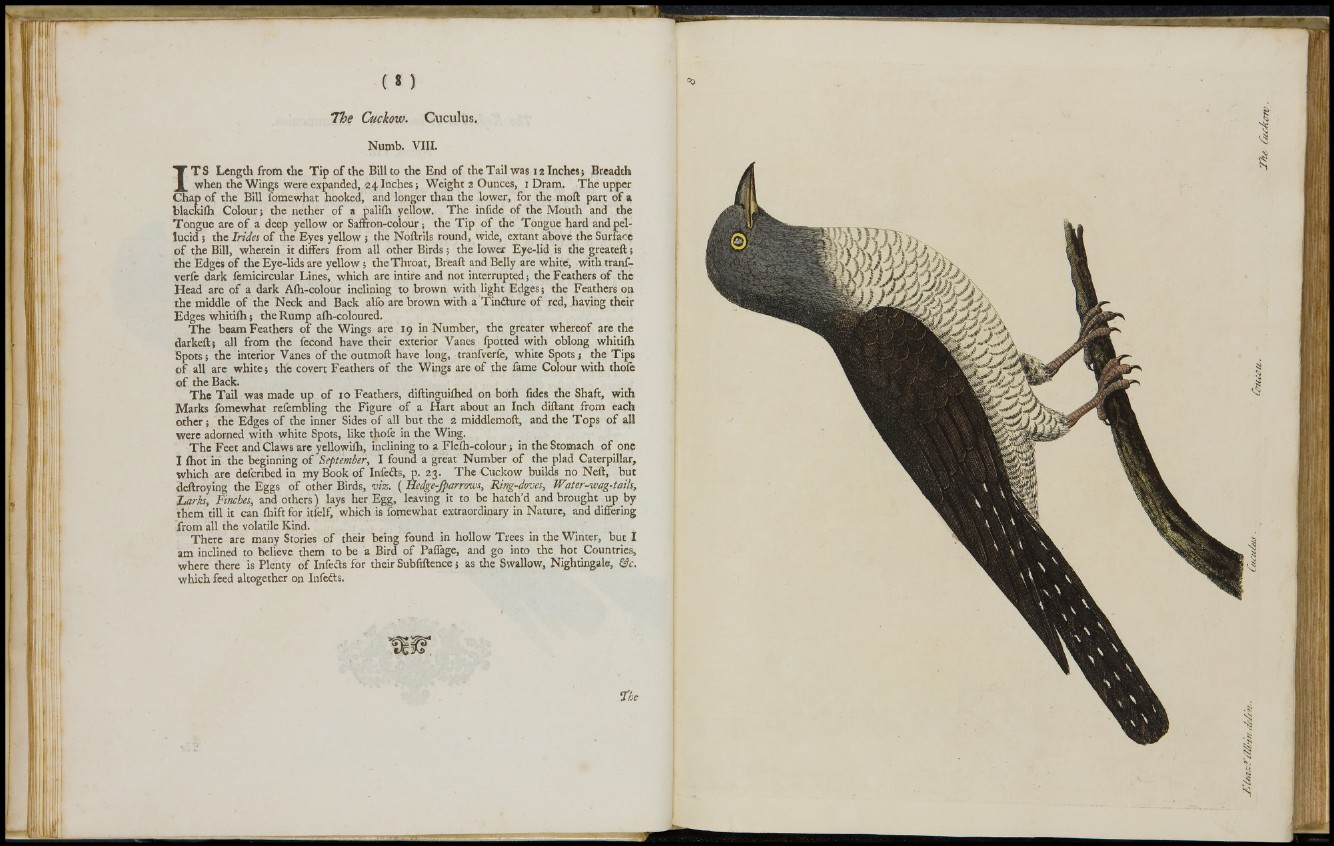
( S )
The Gtickow. Cuculus.
Numb. VIII.
IT S Length from the Tip of the Bill to the End of the Tail was 12 Inches; Breadth
when the Wings were expanded, 24 Inches; Weight 2 Ounces, 1 Dram. The upper
Chap of the Bill fomewhat hooked, and longer than the lower, for the moil part of a
blackiih Colour; the nether of a palifh yellow. The infide of the Mouth and the
Tongue are of a deep yellow or Saffron-colour; the Tip o f the Tongue hard and pellucid
; the Irides of the Eyes yellow ; the Noftrils round, wide, extant above the Surface
of the Bill, wherein it differs from all other Birds; the lower Eye-lid is the greatefl:;
the Edges of the Eye-lids are yellow; the Throat, Breaft and Belly are white', with tranf-
verfe dark femicircular Lines, which are intire and not interrupted j the Feathers of the
Head are of a dark Afh-colour inclining to brown with light Edges; the Feathers on
the middle of the Neck and Back alfb are brown with a Tin&ure of red, having their
Edges whitifh; the Rump afh-coloured.
The beam Feathers of the Wings are 19 in Number, the greater whereof are the
darkeft; all from the fecond have their exterior Vanes fpotted with oblong whitifh
Spots; the interior Vanes of the outmoft have long, tranfverfe, white Spots; the Tips
of all are white; the covert Feathers of the Wings are of the fame Colour with thofe
o f the Back.
The Tail was made up of 10 Feathers, diflinguifhed on both fides the Shaft, with
Marks fomewhat refembling the Figure of a Hart about an Inch diftant from each
other; the Edges of the inner Sides of all but the 2 middlemoft, and the Tops of all
were adorned with white Spots, like thofe in the Wing.
The Feet and Claws are yellowifh, inclining to a Flefh-colour; in the Stomach of one
I fhot ini the beginning of September, I found a great Number of the plad Caterpillar,
which are defcribed in my Book of Infe&s, p. 23. The Cuckow builds no Neff, but
deftroying the Eggs of other Birds, viz . ( Hedge-Jparrows, Ring-doves, IVater-wag-tails,
harks, Finches, and others) lays her Egg, leaving it to be hatch’d and brought up by
them till it can fhift for itfelf, which is fomewhat extraordinary in Nature, and differing
from all the volatile Kind.
There are many Stories of their being found in hollow Trees in the Winter, but I
am inclined to believe them to be a Bird of Paffage, and go into the hot Countries,
where there is Plenty of Infefts for their Subfiftencc; as the Swallow, Nightingale, &c.
which feed altogether on Infeits.